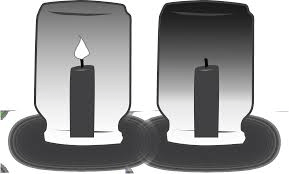Air and tap water are examples of this type matter.
What is Heterogenous Mixture
The number of milliliters (mL) per liter (L).
What is 1000
The subatomic particle with a negative charge.
What is an electron
The maximum amount of product possible in a chemical reaction for a given quantity of reactants.
What is Theoretical Yield
A substance, often a liquid, capable of dissolving one or more pure substances.
What is a Solvent
The energy of position.
What is Potential Energy
The units of frequency.
What is Hertz or
1/(s)
The complete transfer of a valence electron from one atom to another when bond electronegativity is >2.0
What is an Ionic Bond
The type of reaction involved in frying an egg.
What is a chemical reaction
The quantity of this type of subatomic particle defines the type of atom.
What are Protons
The mass of 1 mole of N2 gas.
What is 28.02 g
A compound that produces hydronium (H3O+) ions in aqueous solution.
What is a Acid
The flow of kinetic energy from a hotter object to a colder object.
What is Heat
The variable h = 6.626 x 10-34 J*s
What is Planck's Constant
The number of valence electrons in Phosphorus.
What is Five
A pure substance of two or more different elements in fixed proportions.
What is a Compound
The number of microliters per liter.
What is 1,000,000 (one million)
Atomic mass - # Protons =
What is the number of Neutrons
The moles of water that are in 18.02 grams
What is One
The substance that is dissolved and makes up a minority of the solution.
What is a Solute
Evaporation of sweat is an example of this type of process.
What is Endothermic
The distance between successive peaks in a wave.
What is Wavelength
Two atoms sharing two or more electrons.
What is a Covalent Bond
Significant figures in 0.0100
What is three
A physical property describing the mass of a substance per unit volume (e.g., g/cm3).
What is Density
The number of protons in an atomic nucleus.
What is an Atomic Number
Which reagent is limiting?
2N2 + O2 -> NO2
What is Oxygen
The formation of a solid upon mixing two homogenous solutions.
What is a precipitation reaction
What is Temperature
The electron configuration of oxygen.
What is 1s22s22p4.
When bond electronegativity is between 0.5 and 2.0 this type of bond is formed.
What is a Polar Covalent Bond
A physical property of matter that is not influenced by the quantity of matter present (ex. density).
What is Intensive
20,000 in scientific notation
What is
2*10^4
A neutral Carbon atom has this many electrons.
What is 6 electrons.
You have 5.0 grams of Carbon and Oxygen. For which element do you have more atoms?
What is Carbon
Ionic solute that is only slightly soluble.
What is a Weak Electrolyte
Energy is lost through heat and/or work in this type of chemical system.
What is Exothermic
The light released when an electron falls from an excited state to a low energy state.
What is a Photon
Which element C, N, or O is least electronegative?
What is Carbon
The units of:
(mg)/(L)*(1000 mug)/(1 mg)*(1L)/(1000mL)
What is:
(mug)/(mL)
(mol)/(L) are the units of this measure of concentration.
What is Molarity
Another name for Group 7A elements.
What are Halogens
The molecular formula for the compound with empirical formula CN, empirical mass 26.0 grams, and molecular mass 52.0 grams.
What is C2N2
(cyanogen)
Acid and base combine to form water.
What is Acid-Base Neutralization
The term used to describe
DeltaH_(rxn)
What is Enthalpy of Reaction
The charge on a Sulfur ion.
What is -2
The number of core electrons in Silica.
What is 10
Stainless steel, which is primarily iron with about 11% Chromium and Nickle impurities, is this type of mixture.
What is a Homogenous Mixture.
The prefix for
1*10^-9
What is nano
When an type of atom has more than one atomic weight (e.g., 14-N and 15-N).
What are Isotopes
Oxygen in a the following combustion reaction: 
What is a limiting reagent
The term used to describe Na and Cl in the following reaction: NaOH(aq) + HCl(aq) -> H2O(l) + Na+(aq) + Cl-(aq)
What are spectator ions
The energy necessary to initiate a chemical reaction.
What is Activation Energy
Light with higher frequency and shorter wavelengths has ____ energy than light with low frequency and long wavelengths.
What is Higher
The formal charge of oxygen in hydroxide (OH-).
What is -1
The phase of matter where atoms or molecules have the lowest kinetic energy.
What is a Solid
0.000030 in scientific notation.
What is
3.0 * 10^-5
The empirical formula of the following molecule: C2H6O2
What is CH3O
The percent composition of carbon in carbon monoxide.
What is 43%
The oxidation number of sulfur in sulfur dioxide (SO2).
What is +4
The units of specific heat capacity.
What is (kJ)/(g*^@C)
ml represents ...
What are orbitals
The partial positive and negative charges that result from unequally shared electrons.
What is a Bond Dipole